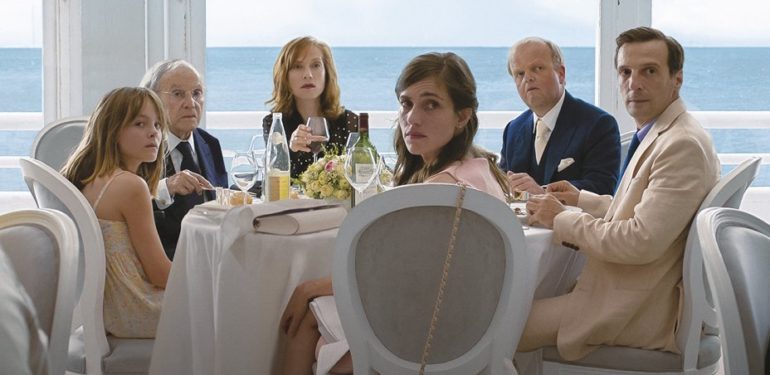Michael Haneke depicts contemporary life better than most directors half his age.
Nobody can place a camera like Michael Haneke. Director of cinematic endurance tests (Funny Games) and aggressively perverted relationship comedies (The Piano Teacher) Haneke has a fondness for the still shot. His latest, Happy End, which the British film critic Mark Kermode said, ‘plays … like a collection of Haneke tropes’ has been lukewarmly received by critics. In the past, reviewers of Haneke’s more disturbing films have actively tried to dissuade people from even seeking out the film, but Happy End has been met with dismissive shrugs. This is a shame, and wrong, because this film is excellent, and might be one of the medium’s most chillingly accurate depictions of modern life.
The opening shot is stationary, a security camera overlooking a construction site. There’s a lot going on in the shot, none of it interesting. Workers in yellow hardhats are crossing the site, talking to one another, operating machinery. For the first seconds, you’ll probably scan the frame for some clue, something happening. Then, suddenly and without any audio cues, a massive section of the wall collapses in an avalanche of concrete and dirt. In my screening at the Cinema Nova, I saw someone, seconds after the event, pointing at the screen and whispering to her friend. It’s a momentous ‘blink and you’ll miss it’ moment.
The film’s main character is a 13 year old girl named Eve Laurent (Fantine Harduent). After poisoning her hamster with her mum’s anti-depressants (filmed through a smartphone lens, with essential plot details doled out in Eve’s messages via a live stream), she goes to live with her Dad (Mathieu Kassovitz). With him is the elderly Georges Laurent (Jean-Louis Trintignant), an embittered man who is trying to commit suicide in every one of his scenes, and Anne Laurent, played by Isabelle Huppert (currently the world’s greatest living screen actor). Anne heads the production company at which her son Thomas (Franz Rogowski) works, where the accident took place. Her son is peculiar—a kind of affectless alcoholic whose deepest misery is held at a distance. Anne mostly speaks to him through clipped tones, Huppert giving a restrained performance that shows warmth to every character in the film except her son.
Stationary shots capture most of the action in the film. There’s one filming a busy road, the cars drowning out any other sound in the shot. The elderly Georges is rolling along in his wheelchair on the other side of the road. He approaches a group of young black guys and starts gesturing at the road, talking animatedly. Georges begins to take off his watch and tries to offer it to one of the guys, at which point they leave, dismissing him. It’s one of the movie’s funniest scenes.
The objectivity of the shots, filmed by a 75 year old director, perfectly express the psychopathic objectivity with which we record almost everything on our smartphones. Happy End might have a misleading title, but, even in his old age, Haneke’s not missing a beat.
– Tom
Tom Bensley is a freelance writer in Melbourne who reviews anything he attends, watches or reads. It’s a compulsion, really. Follow him @TomAliceBensley.
Happy End is now playing at the Cinema Nova.




